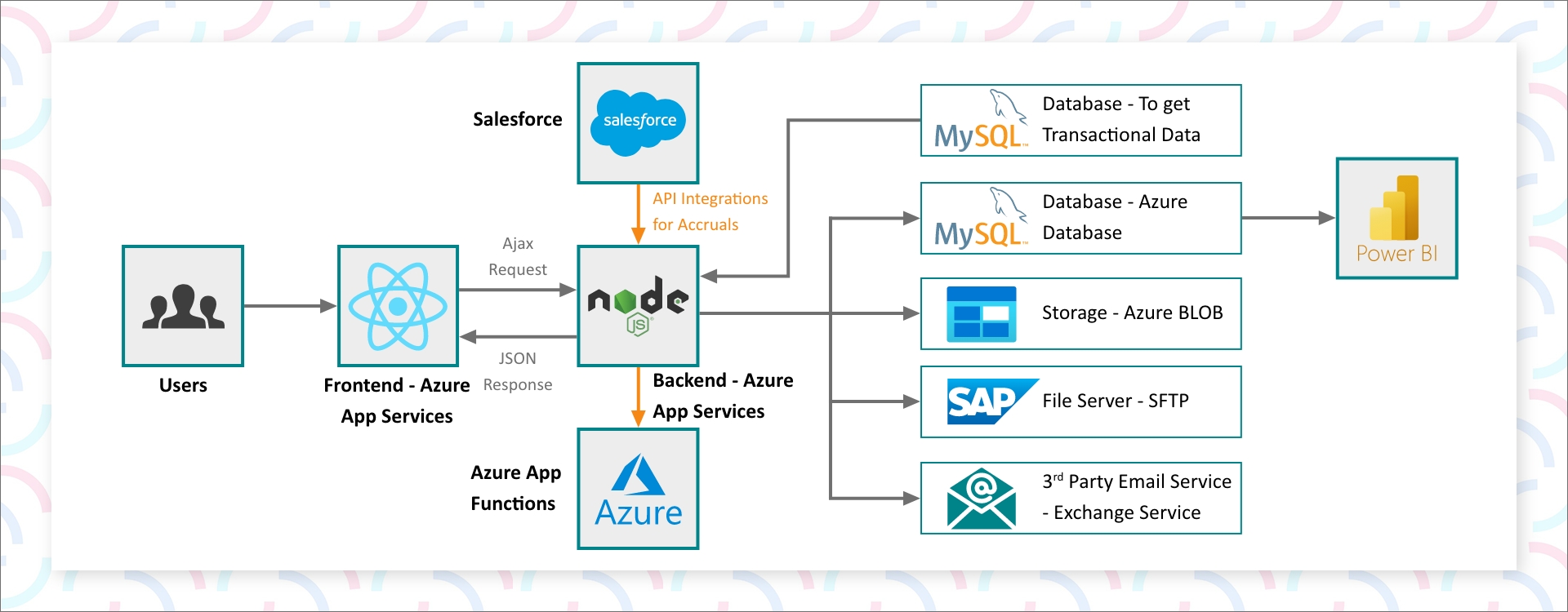❅
❅
❅
❅
❅
❅
❅
❅
❅
❅
❅
❅
❅
❅
❅
❅
❅
❅
❅
❅
❅
❅
❅
❅
❅
❅
❅
❅
❅
❅
❅
❅
❅
❅
❅
❅
❅
❅
❅
❅
❅
❅
❅
❅
❅
❅
❅
❅
❅
❅
❅
❅
❅
❅
❅
❅
❅
❅
❅
❅
❅
❅
❅
❅
❅
❅
❅
❅
❅
❅
❅
❅
❅
❅
❅
❅
❅
❅
❅
❅
❅
❅
❅
❅
❅
❅
❅
❅
❅
❅
❅
❅
❅
❅
❅
❅
❅
❅
❅
❅
❅
❅
❅
❅
❅
❅
❅
❅
❅
❅
❅
❅
❅
❅
❅
❅
❅
❅
❅
❅
❅
❅
❅
❅
❅
❅
❅
❅
❅
❅
❅
❅
❅
❅
❅
❅
❅
❅
❅
❅
❅
❅
❅
❅
❅
❅
❅
❅
❅
❅
❅
❅
❅
❅
❅
❅
❅
❅
❅
❅
❅
❅
❅
❅
❅
❅
❅
❅
❅
❅
❅
❅
❅
❅
❅
❅
❅
❅
❅
❅
❅
❅
❅
❅
❅
❅
❅
❅
❅
❅
❅
❅
❅
❅
❅
❅
❅
❅
❅
❅
Overview
Enhance finance process automation with invoice automation, automated data ingestion, real-time data processing, and enterprise data integration solutions.
At A Glance

Industry
Food & Beverages

Region
Europe

Duration
12 Weeks
Technical Stack








Client Profile
The client is a prominent brewing company in Europe that operates a powerful system of more than 300 breweries. Their regional distribution system allows them to address more than 1 billion consumers and 3 million customers worldwide.
Challenge
- Scattered Data Across Systems
Data was dispersed across Blackline, SAP, Salesforce, internal tools, and Excel, causing inconsistencies and duplication and limiting opportunities for real-time data processing.
- Manual Invoice Processing
Invoices and follow-ups were generated manually, resulting in delays, human errors, and the absence of an efficient invoice automation framework, highlighting a broader need for finance process automation.
- Time-Consuming Audit Preparation
Consolidating data for audits lacked a streamlined process and required significant manual effort.
- No Unified Analytics Workflow
The absence of a centralized analytics flow limited quick, data-driven decision-making.

Solution
- Automated Data Ingestion Pipelines
Integrated scalable data ingestion pipelines that fetch 500+ MB of data at regular intervals and transform it as per business rules through enhanced automated data transformation, supporting a more robust enterprise data integration foundation.
- Automated Invoice Dispatch & Follow-Ups
Enabled automatic sending of 10,000+ invoices daily with scheduled follow-up reminders, forming a core part of the new automated invoice processing system.
- Escalation Workflow Automation
Implemented auto-escalation to notify higher authorities if no response is received within the defined timeframe.
- Real-Time Dashboards
Built dashboards offering instant, actionable business insights, supported by a more cohesive unified analytics platform approach.
- KPI Tracking Automation
Automated KPI measurement to assess employee performance and align roles with organizational goals.
- Comprehensive Activity Logs
Maintained detailed logs of system actions and vendor responses to simplify audits, improving transparency and contributing to effective vendor management automation.
- Import/Export Validation Module
Added data import/export features for comparison with verified third-party systems to ensure authenticity, strengthened further by improved data validation automation to ensure accuracy and consistency.
Key Benefits
- 50% Reduction in Operational Expenditure
Automation significantly reduced the workload for the accounting department, lowering overall operational costs and contributing to scalable automation in finance initiatives.
- Real-Time Visibility Into Business Performance
Dashboards enabled immediate insight into key metrics and faster decision-making.
- 31% Improvement in Operational Efficiency
KPI automation enhanced employee performance tracking and accelerated progress toward strategic goals.
- Advanced Data Drill-Down Capabilities
Enabled deeper insights such as credit risk modeling, vendor management optimization, customer lifetime value analysis, and customer segmentation.
Develop your next idea with usGet in touch







